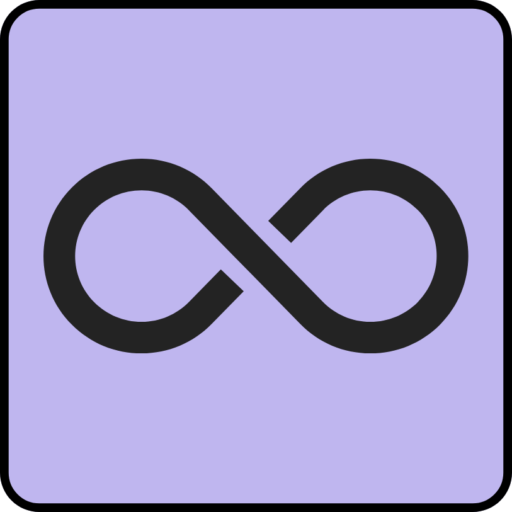In the digital era, maintaining a robust online presence is essential for businesses and individuals. As social media platforms have become primary channels for audience engagement, the demand for efficient methods to share multiple links has grown significantly. This need has given rise to tools like Linktree and landing pages.
Linktree is a popular service that enables users to create a single link containing multiple links to various websites or content. Landing pages, conversely, are standalone web pages designed for specific marketing campaigns or purposes, often utilized for lead generation or conversion optimization. Both Linktree and landing pages serve as valuable tools for directing traffic and engaging audiences, albeit with distinct functionalities and purposes.
This article will examine the features, customization options, user experience, and impact on conversion rates of Linktree and landing pages. Additionally, it will explore how these tools can be integrated into comprehensive marketing strategies.
Key Takeaways
- Linktree is a tool that allows users to create a landing page with multiple links to various online content.
- Linktree offers a simple and user-friendly interface, making it easy for users to navigate and customize their landing pages.
- Landing pages created with Linktree can be customized to match branding and offer flexibility in terms of layout and content.
- When comparing user experience, Linktree offers a seamless and efficient way for users to access multiple links in one place.
- Analyzing the impact on conversion rates shows that Linktree can help drive traffic and engagement to specific online content.
- Integrating Linktree and landing pages into marketing strategies can help businesses effectively promote multiple online assets in one place.
- Ultimately, choosing the right tool between Linktree and traditional landing pages depends on the specific needs and goals of the user or business.
Functionality and Simplicity of Linktree
Customizable Link Page
With Linktree, users can create a customized page with a collection of links to their website, blog, social media profiles, online store, or any other relevant content. This allows users to showcase their online presence and provide their audience with easy access to their content.
Enhanced User Experience
The platform offers a range of features such as link scheduling, analytics, and link thumbnails to enhance the user experience. Linktree’s functionality lies in its ability to streamline the process of sharing multiple links in a clean and organized manner, making it convenient for both content creators and their audiences.
Accessibility and Customization Options
The platform’s user-friendly interface allows users to easily add, remove, or rearrange links on their Linktree page without any technical knowledge or coding skills. This makes it an accessible tool for individuals and businesses of all sizes. Additionally, Linktree offers a free version with basic features, as well as a paid version with advanced customization options and analytics.
Customization and Flexibility of Landing Pages

In contrast to Linktree’s single-page approach, landing pages offer a higher level of customization and flexibility. Landing pages are standalone web pages that can be tailored to specific marketing campaigns or objectives. They are designed to capture visitor information through lead forms, promote products or services, or drive conversions for a particular offer.
Unlike Linktree, landing pages allow for complete creative control over the design, layout, and content, making them highly adaptable to different marketing goals. Landing pages can be customized with compelling visuals, persuasive copywriting, and strategic calls-to-action to guide visitors towards a desired action. They can also be optimized for search engines and A/B tested to maximize their effectiveness.
Additionally, landing page builders often provide integrations with email marketing platforms and CRM systems, allowing for seamless lead capture and follow-up processes. The flexibility of landing pages enables businesses to create targeted experiences for their audiences and track the performance of their campaigns with detailed analytics.
Comparison of User Experience
When comparing the user experience of Linktree and landing pages, it’s important to consider the context in which each tool is used. Linktree excels in providing a seamless experience for sharing multiple links on social media platforms. Its simple interface and single-page format make it easy for users to navigate and access the content they are interested in.
However, Linktree’s user experience is limited to the presentation of links and lacks the immersive and interactive elements that can be incorporated into landing pages. On the other hand, landing pages are designed to deliver a more focused and persuasive user experience. They are optimized to guide visitors through a specific journey, whether it’s signing up for a newsletter, downloading a resource, or making a purchase.
Landing pages can leverage multimedia content, such as videos and interactive elements, to engage visitors and convey information in a compelling way. This creates a more immersive user experience that is tailored to the specific goals of a marketing campaign. While Linktree prioritizes simplicity and accessibility, landing pages prioritize engagement and conversion optimization.
Analyzing the Impact on Conversion Rates
The impact on conversion rates is where the differences between Linktree and landing pages become most apparent. Linktree’s primary function is to provide a centralized hub for sharing multiple links, making it easier for users to access various pieces of content. While it can drive traffic to different destinations, its impact on conversion rates may be limited due to its basic functionality.
Without the ability to tailor the user experience or capture leads directly on the platform, Linktree may not be as effective at driving specific actions or conversions. On the other hand, landing pages are specifically designed to drive conversions and capture leads. By creating targeted experiences and optimizing for specific goals, landing pages have the potential to significantly impact conversion rates.
They can be A/B tested and optimized over time to improve performance, making them valuable tools for driving results in marketing campaigns. The ability to track conversions directly on the landing page provides valuable insights into the effectiveness of different campaigns and offers.
Integrating Linktree and Landing Pages in Marketing Strategies

Centralizing Links for Brand Awareness
Linktree can be used to centralize links for general brand awareness or content sharing on social media platforms. It provides a convenient way for audiences to access various online destinations from a single link.
Targeted Experiences with Landing Pages
However, when it comes to specific marketing campaigns or promotions, landing pages can be used to create targeted experiences that drive conversions and capture leads. By integrating Linktree and landing pages in their marketing strategies, businesses can leverage the strengths of each tool based on their objectives.
Flexibility and Performance Tracking
For example, a brand may use Linktree as a central hub for sharing links to their website, blog, and social media profiles, while using landing pages for lead generation campaigns or product promotions. This approach allows for flexibility in directing traffic based on different marketing goals and provides opportunities for tracking performance at both the top-of-funnel and conversion stages.
Choosing the Right Tool for Your Needs
In conclusion, both Linktree and landing pages offer valuable solutions for directing traffic and engaging audiences online. Linktree excels in its simplicity and functionality for sharing multiple links on social media platforms, while landing pages provide greater customization and flexibility for driving conversions and capturing leads. When choosing between the two tools, it’s important to consider the specific objectives of your marketing efforts.
For general content sharing and brand visibility on social media, Linktree may be an effective solution due to its ease of use and accessibility. However, for targeted marketing campaigns with specific conversion goals, landing pages offer a more tailored approach that can drive higher conversion rates and provide valuable insights into campaign performance. Ultimately, the choice between Linktree and landing pages depends on the nature of your content or marketing objectives.
By understanding the strengths and limitations of each tool, businesses can make informed decisions about how to best leverage them within their overall marketing strategies. Whether it’s simplifying link sharing or driving conversions, both Linktree and landing pages have their place in the digital marketing landscape.
FAQs
What is Linktree?
Linktree is a tool that allows users to create a single landing page with multiple links to various websites, social media profiles, and other online content. It is commonly used in social media profiles to share multiple links in a single location.
What is a Landing Page?
A landing page is a standalone web page created specifically for a marketing or advertising campaign. It is where a visitor “lands” after clicking on a link in an email, advertisement, or similar places on the web.
What are the main differences between Linktree and a Landing Page?
The main difference between Linktree and a landing page is the level of customization and functionality. Linktree offers a simple and easy way to share multiple links in one place, while a landing page allows for full customization and control over the design, content, and functionality.
Which one is better for functional simplicity?
Linktree is better for functional simplicity as it offers a quick and easy way to share multiple links in one place without the need for technical skills or design knowledge.
Which one is better for full customization?
A landing page is better for full customization as it allows users to have complete control over the design, content, and functionality of the page, making it ideal for specific marketing or advertising campaigns.
Can Linktree be customized to some extent?
Linktree does offer some customization options such as changing the background image, colors, and adding a profile picture, but it is limited compared to the level of customization available with a landing page.
Which one is more suitable for businesses or brands?
For businesses or brands looking to create a cohesive and branded online presence, a landing page is more suitable as it allows for full customization to align with the brand’s identity and messaging.
Which one is more commonly used on social media platforms?
Linktree is more commonly used on social media platforms due to its simplicity and ease of use for sharing multiple links in a single location.

